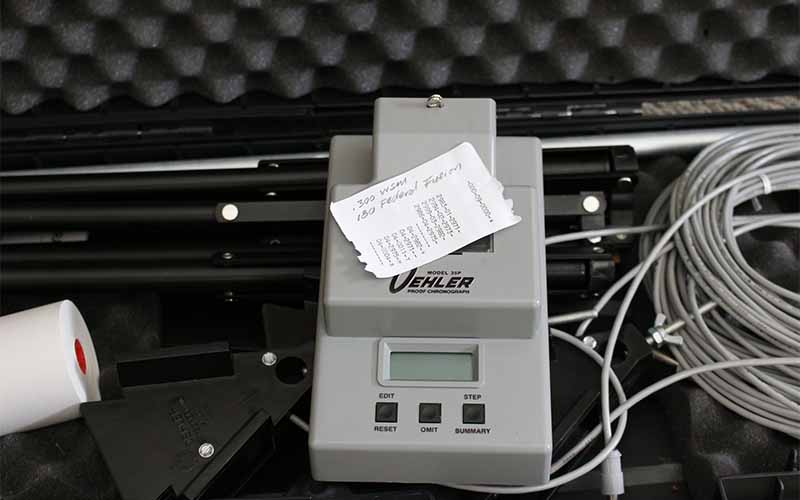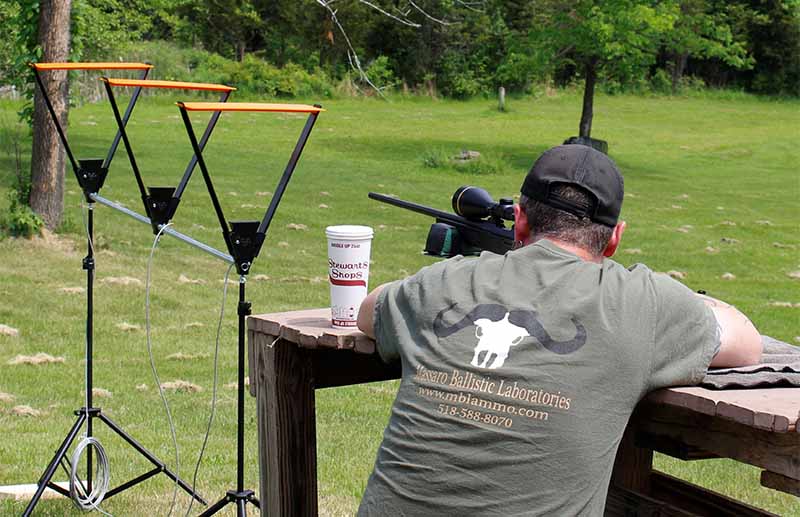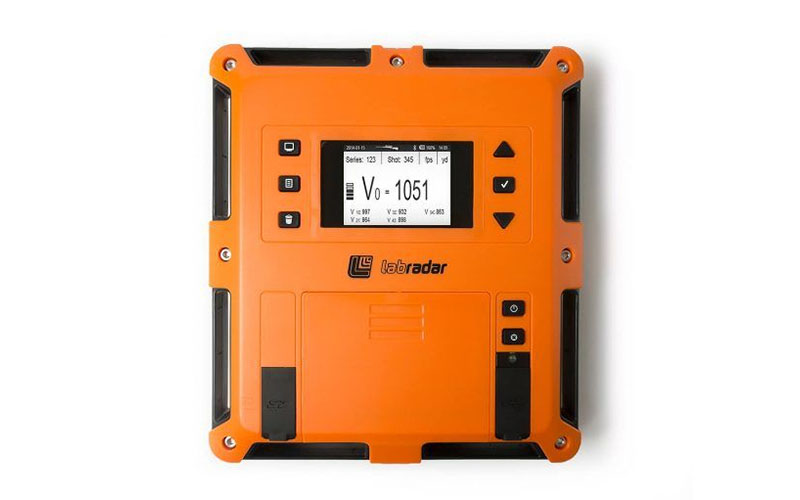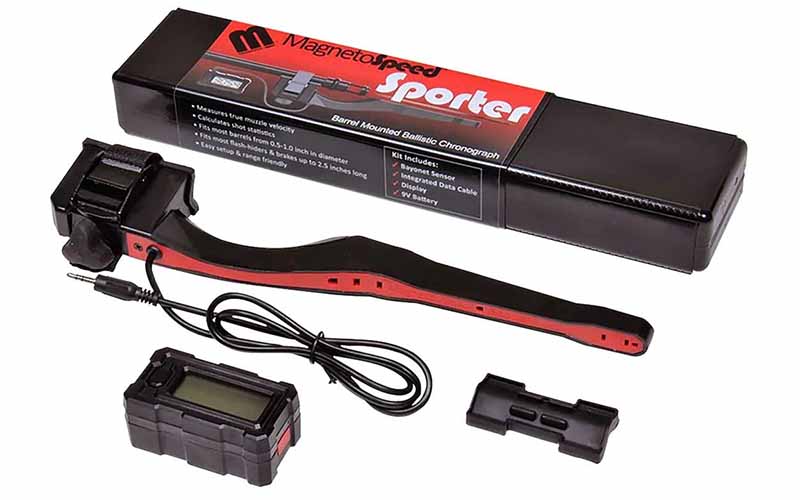
If you want to crunch the numbers to check if your handload’s velocity expectations match reality, you’re going to need a chronograph.
My friend, Mike McNulty, had come over to my house, as we were planning to do the necessary load development for an upcoming safari to Zimbabwe. With his beloved Heym Express .505 Gibbs in tow, we knew we had a great load using the standard 525-grain bullets—long proven in the voluminous case—but Mike was interested in using 570-grain slugs on this hunt. We’d obtained some premium bonded-core softpoints, and the solids of correlative weight, and consulted the data published by the manufacturer in their own reloading manual.
In order to be safe, we decided to stay 2 grains below the published maximum and carefully loaded up a half-dozen of each bullet. Grabbing the Oehler 35P chronograph and heading (optimistically) to the range, one could only imagine our dismay as the display showed 1,750 fps … instead of the book advertised 2,160 fps. I thought that the chrono was giving some sort of false reading, until we checked the speed from a proven handgun load in my EDC gun, as well as another rifle: It wasn’t the chronograph, much to our disappointment. Factory loads from Mike’s .505 Gibbs registered very close to the advertised velocity, so all signs pointed to the data.

I ruled out a bad measurement for the powder charge by pulling some of the loaded cartridges, and everything was fine in that department. I started to cross-check the published data with other reloading manuals and found a considerable discrepancy, which made sense with the observed velocities.
But why? What could’ve gone wrong, either in the manual or with the rifle?
The same thing happened to me when I was helping a friend do some load development for a 7mm Remington Magnum. Using 175-grain Nosler AccuBond Long Range bullets, one load showed great velocities yet mediocre group size, while the group that gave hair-splitting accuracy clocked 300 fps or so below the “book” velocities. I finally found the proper blend of both attributes, but the simple fact that the truth varied so much from the manual’s observation simply perplexed me.
Fighting The Formulas
I’ve had this happen a number of times, where a certain manual shows a maximum load for a cartridge/bullet weight combination, and yet another—when referring to a bullet of similar configuration and conformation—will show a radically different number. Now, when it comes to reloading manuals, one must understand that they’re a test report—an observation of the effects and statistics of a combination of bullet, powder charge, primer choice and a particular and unique barrel/chamber combination.
Should a particular reloading manual test things with a fast—or slow—barrel, it wouldn’t be difficult to see where the discrepancy could come from, and why it might not translate well to your particular rifle or handgun. In Mike’s instance, the discrepancy was enormous.

Imagine if we believed the velocity listed and sallied forth, confident in the capabilities of the rifle and cartridge, only to blame the bullet for the poor penetration … when the fault is to be laid at the feet of the velocity of the chosen load. In this particular situation, we’re talking about a dangerous game cartridge that’s generally used at short ranges. If the same level of deviation was to rear its ugly head in a .300 Winchester Magnum or 6.5 PRC, you could easily see where the shooter would be beyond puzzled as to why the bullets were hitting so low.
What surprises me so often is how many reloaders have a complete aversion to a chronograph. Without the chrono, I’d have had no idea how far off my velocities were in both of those situations. Yes, the .505 Gibbs—with its terrible recoil—was visibly less violent with the slower ammunition, so there was that indicator, but the 7mm Remington Magnum didn’t show that much of a difference in recoil.
The moral of this story? A chronograph is an absolutely necessary tool for the serious reloader.
Chronograph = Mandatory
There are all sorts of reasons for owning a high-quality chronograph, with long-range shooting being quite obvious. If you wish to employ a trajectory-calibrated turret like the Leupold CDS, or a ballistic reticle to adjust elevation for longer shots, knowing the precise muzzle velocity is paramount. For those who shoot IPSC competitions, having your ammunition qualify for either major or minor is utterly dependent on an accurate velocity measurement. For those who’ve gone as far down the rabbit hole as I have—and it’s a long journey—seeking the near-perfect load with lowest extreme spread in the velocity category, a chronograph is among the must-have tools.
The type of chrony is a personal decision, though I will say that any chrony is better than no chrony at all. With the frequency I use mine, I wanted the industry standard and opted for the Oehler Model 35P, with three skyscreens to eliminate as much error as possible. The unit uses the observed speed between screens one and two (the first and middle), and then between one and three (first and last), averaging the measurements. It’s rock solid, and so long as you don’t hit it with an errant shot (been there, done that), it’ll last a lifetime. It even has a printer to keep a hard copy of the shot string and all its velocity data.

Many folks like the LabRadar unit, which doesn’t rely on a light source, as my Oehler and many other units do, but uses Doppler radar to track and measure your bullets velocity. MagnetoSpeed is another unit that uses cutting-edge technology to accurately measure velocity, though mounting the bayonet-style measuring device absolutely will affect accuracy. So, you shoot for group, and then secondarily, you shoot to measure velocity; it’s very accurate and gives consistent readings in comparison to my Oehler 35P.
Whichever unit you choose, even if it’s an entry-level unit, recording the velocity of your rifle and handgun loads is as important as measuring group size. I believe a consistent velocity in a rifle load to be nearly as important as the 100-yard group size; in fact, at longer ranges, it may prove more important.

For load development, for the process of truing a rifle’s long-range trajectory, and most certainly for the best use of a ballistic calculator like a Kestrel unit, a reliable muzzle velocity value is paramount. I can no longer go forward blindly accepting a reloading manual’s published values; there are too many variables involved in the testing procedures—no fault of the manual’s publishers—which can throw a wrench into the works.
A chronograph will tell the tale, and get you as close to the truth as possible, shy of actually truing the rifle at each and every distance you intend to shoot.
Editor's Note: This article originally appeared in the August 2023 issue of Gun Digest the Magazine.
More On Reloading:
- Tips For Reloading the .30-06 Springfield
- Loving Your Luger: Reloading the 9mm Luger
- Handloading: Tips For Reloading The 7mm Rem Mag
- How To: Tips For Reloading the .223 Remington
- Reloading Bench: The Inside On Reloading For The .30-30 Winchester

Next Step: Get your FREE Printable Target Pack
Enhance your shooting precision with our 62 MOA Targets, perfect for rifles and handguns. Crafted in collaboration with Storm Tactical for accuracy and versatility.
Subscribe to the Gun Digest email newsletter and get your downloadable target pack sent straight to your inbox. Stay updated with the latest firearms info in the industry.

![Best Concealed Carry Guns In 2025 [Field Tested] Wilson Combat EDC X9S 1](https://gundigest.com/wp-content/uploads/Wilson-Combat-EDC-X9S-1-324x160.jpg)


![Best 9mm Carbine: Affordable PCCs [Tested] Ruger Carbine Shooting](https://gundigest.com/wp-content/uploads/Ruger-Carbine-Shooting-100x70.jpg)
![Best AR-15: Top Options Available Today [Field Tested] Harrington and Richardson PSA XM177E2 feature](https://gundigest.com/wp-content/uploads/Harrington-and-Richardson-PSA-XM177E2-feature-100x70.jpg)
